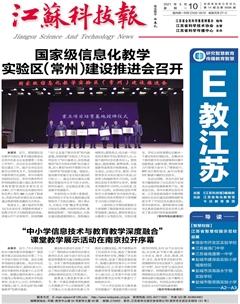Driving K-12 Innovation:2021 HURDLES + ACCELERATORS(Ⅰ)
Product by CoSN (Consortium for School Networking) 美國學校網絡聯合會
《基礎教育創新驅動力報告》是繼《地平線報告(基礎教育版)》后推出的國際教育信息化發展的重要參考報告,報告發布方美國學校網絡聯合會(CoSN)為《地平線報告》發布方美國新媒體聯盟的原有合作伙伴,致力于為基礎教育及學前領域的教育技術從業者提供團隊、知識和專業發展服務,助力創建和發展更有吸引力的學習環境。
Introduction
Theres no doubt that the COVID-19 pandemic has, and continues to have, a profound impact on education and society. The degree of that lasting effect will depend on the education ecosystems level of commitment to, and capacity for, change and transformation. The Driving K-12 Innovation framework helps us make sense of the state of the world, no matter what the current state may be— possibilities, and paths forward. Advisory Board members shared many ways in which our world is changing and in many cases how the current state is amplifying Hurdles, Accelerators, and Tech Enablers.
Top 3 Hurdles
1.Digital Equity
Digital Equity includes three, interrelated components: digital foundations, conditions for learning, and meaningful learning opportunities. This nuanced hurdle encompasses more than just equitable access to quality digital technologies such as high-speed internet and powerful computing devices both inside and outside of school. It also includes ensuring that students have the knowledge and skills to use technology in the service of learning; that they interact with robust and accessible content and programs; that students and their identities are represented with and by the technologies themselves; and that they experience meaningful opportunities that empower them as learners.
2.Scaling and Sustaining Innovation
Whether it be practices for effective teaching and learning, organizational business processes, or technology usage, schools are challenged to engage in and effectively scale innovation. Major challenges include: supporting risk-taking projects and identifying value-adding innovations; building ongoing investment support for integration; adapting what is working well at a small scale and scaling it out across a school, district, or state/country; and embracing the transformation of practices and culture ushered in by innovations.
3.Evolution of Teaching and Learning
The teaching and learning landscape is changing, opening up the opportunity to move toward a better balance of teacher facilitation and student learning. As teaching, learning, and learning outcomes are constantly being redefined, schools are tasked with ensuring that teaching practices and pedagogies intentionally integrate advances in technology and learning sciences. Professional development is essential in this evolution.
Top 3 Accelerators
1.Personalization
As the consumer sector has exploded with new ways to customize user experiences and products, schools are also finding ways to provide customized learning and support at the individual level. Personalized learning happens when all aspects of learning are directed by the needs of the learner. This includes teachers shaping the teaching and learners directing the learning in ways that honor the variability of learners needs and strengths including pace, pathways, strategies and demonstrating knowledge/skills.
2.Social and Emotional Learning
A core function of education is building skills and understanding for mental, social, and emotional wellbeing, including empathy, grit, persistence, flexibility, and adaptability. These capabilities shape mindsets and enhance successful learning, collaboration, problem-solving, and civic responsibility. In the face of remote learning and the adaptations necessitated by the COVID-19 pandemic, many learners, families, and educators are experiencing tremendous anxiety, loneliness, mental stress, trauma, and grief. In this moment educators are challenged to think about how Social Emotional needs are enhanced or diminished with varying uses of technology, and to reimagine school norms to better enable the wellbeing of staff, learners, and parents/guardians.
3.Learner Autonomy
Learner Autonomy is all about student agency, encompassing anything from letting students choose how they access content, to how they organize their learning, to how they exhibit their learning. Productive struggle informed choice, freedom, and flexibility are growing values in K-12, especially as students learn to form decision-making and time management habits that set them up for life success. Schools play a major role in scaffolding learner autonomy and cultivating intentional development of student capacities to make effective use of their autonomy to help them harness the power of their own agency.
概述
毫無疑問,新冠肺炎疫情已經并將持續對教育和社會產生深遠影響。這種持久影響的程度將取決于教育生態系統對變革的投入水平和適應能力。《基礎教育創新驅動力報告》框架有助于我們了解世界的現狀,無論目前的狀況如何——是否有新的可能性和前進的道路。咨詢委員會成員分享了世界正在發生的許多變化方式,以及在多數情況下,當前的世界狀態是如何擴大教育面臨的挑戰、趨勢和技術驅動的。
三大挑戰
1.數字公平
數字公平包括三個相互關聯的組成部分:數字化基礎設施、學習條件和有意義學習的機會。這一微妙的挑戰不僅僅包括公平地獲得優質的數字技術,例如高速互聯網和校內外強大的計算設備。它還包括確保學生有數字知識和技能,能夠利用技術服務于學習;能與穩健并可訪問的內容和程序互動;技術本身代表著學生及其身份;學生有體驗有意義學習的機會,成為學習者。
2.保持與擴大創新
無論是有效的教學、組織業務流程還是技術運用的做法,學校都面臨著參與并有效地進行規模創新的挑戰。主要挑戰包括:支持風險項目和確定增值創新;建立持續的投資支持,促進一體化;小規模調整工作良好的項目,并在學校、地區或國家范圍內推廣;接受創新引領的實踐和文化變革。
3.教與學的變革
教與學的格局正在發生變化,為教師促進和學生學習的更好平衡提供了機會。隨著教學、學習和學習成果不斷被重新定義,學校的任務是確保教學實踐和教學方法能有意地結合先進的技術和學習科學。在這一演變過程中,教師專業發展至關重要。
三大趨勢
1.個性化發展
就像消費領域爆炸式地利用新技術去定制用戶體驗、依據用戶數據推薦產品一樣,學校也在尋找提供個性化學習與支持的方法。個性化學習是指以學習者的需求引導學習的各個方面。這包括教師修改教學,以及學習者根據自我需求和優勢的變化決策學習方式,包括進度、途徑、策略和展示知識或技能。
2.社會情感學習
教育的一個核心功能是培養技能,理解精神、社會和情感健康,包括同情心、勇氣、毅力、靈活性和適應性。這些能力可幫助學生調整心態,促進學習成功、團結協作、問題解決和公民責任等綜合素質的提升。面對遠程學習和新冠肺炎疫情所要求的適應性,許多學習者、家庭和教育工作者正經歷著巨大的焦慮、孤獨、精神壓力、創傷和悲痛。這時,教育工作者面臨的挑戰是思考社會情感需求是如何隨著技術的變換使用而增強或減弱的,以及如何重新構想學校規范,以更好地謀求員工、學習者和家長或監護人的福祉。
3.自主學習
自主學習是關于主體精神的,包括讓學生選擇如何訪問內容、如何組織學習、如何展示學習的任何內容。富有成效的艱難的知情選擇、自由選擇和靈活性的價值在基礎教育領域中日益增長,特別是當學生學會形成決策的能力和養成時間管理習慣,就為以后成功的人生奠定了基礎。學校在培養學生自主學習能力和有意識地自我發展能力方面發揮著重要作用,從而有效地利用學生的自主學習能力,幫助他們發揮自己的能動性。

